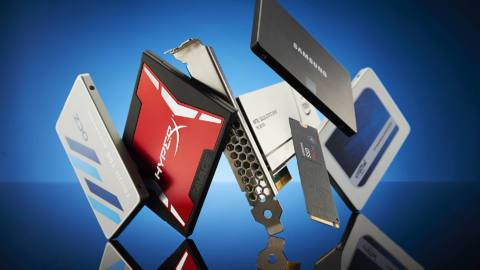Good news for those of you that have kept that big ol' stack of burned DVD and CD backups, taking up space in your attic: They may well be making a comeback. A team of researchers also appear to have also had a hard time letting the concept of spinning disc storage go, as they've developed an optical disc with a massive capacity of well over a petabit of data.
A team of scientists and researchers at the University of Shanghai for Science and Technology have managed to exponentially increase the capacity of an optical disc by making use of a 3D planar recording architecture (via Techspot). Essentially, the process involves stacking hundreds of data-recording layers a mere one micrometer apart, all while keeping the overall thickness of the disc the same as a traditional DVD or Blu-ray.
This much denser physical storage format makes use of 100 layers, which is said to result in a maximum data capacity of 1.6 petabits, or roughly 200 terabytes of storage. That's a gigantic leap over even the most advanced quad-layer Blu-ray disks, that currently top out at around 128 GB of data.
It should come as no surprise that this solution is primarily being developed for enterprise storage. The researchers hope to reduce the space needed for a high-capacity data centre down from a gigantic facility to a single room by switching over to an optical storage solution, which would not only make the centres themselves cheaper to build but also cut down on the associated heat and energy issues that data facilities can currently struggle with.
Another associated benefit would be the minimisation of data migration. The discs are said to be highly stable, with an expected lifespan of 50 to 100 years. That's a huge leap over current data centre HDD based storage systems, which generally move data over to new devices every five to 10 years to avoid data-loss from ageing drives.
And while enterprise usage appears to be the priority, the researchers also say that home databases are a potential future use-case. If you've got a stack of external hard drives backing up your precious holiday photos, videos and documents, the team envisions a future where a home database might make use of the technology, storing a whole families worth of aggregated data on a single, familiar looking disc.

Best SSD for gaming: The best speedy storage today.
Best NVMe SSD: Compact M.2 drives.
Best external hard drives: Huge capacities for less.
Best external SSDs: Plug-in storage upgrades.
The downside? Well, as things currently stand the researchers have yet to develop a fast and affordable drive to read the discs, although the new media could be made to be compatible with current optical disc technology in the future. So I wouldn't go digging out that old DVD or Blu-ray drive just yet, unless you enjoy a heavy dose of pleasing technological nostalgia.
A simpler time, wasn't it? The comforting whirr of an optical drive, the press of a button revealing a hidden tray. Oh the things we've lost. Although if this research continues to develop, perhaps we're not far away from spinning discs making a return into our daily lives once more.





